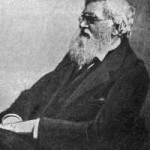Darwin gets the lion’s share of the acclaim, even though both Darwin and Alfred Russel Wallace co-announced the discovery of natural selection to the Linnean Society in 1858.
Thing are changing, and it’s now time for Mr. Wallace to get a bit more of the stage. This, according to an in-depth article on Alfred Russel Wallace called “The Man Who Wasn’t Darwin,” in the December, 2008 edition of National Geographic. Reading the article I leaned that Wallace was by no means a one-trick pony. Rather:

[Wallace’s] writings, on subjects from evolutionary theory and social justice to life on Mars, are coming back into print or turning up on the Web. He is recognized among science historians as a founder of evolutionary biogeography (the study of which species live where, and why), as a pioneer of island biogeography in particular (from which the science of conservation biology grew), as an early theorist on adaptive mimicry, and as a prescient voice on behalf of what we now call biodiversity. That is, he’s a towering figure in the transition from old-fashioned natural history to modern biology. During his years afield Wallace was also a prolific collector, a ruthless harvester of natural wonders; his insect and bird specimens added richly to museum holdings and the discipline of taxonomy. Still, most people who know of Alfred Russel Wallace know him only as Charles Darwin’s secret sharer, the man who co-discovered the theory of evolution by natural selection but failed to get an equal share of the credit. Wallace’s story is complicated, heroic, and perplexing.

